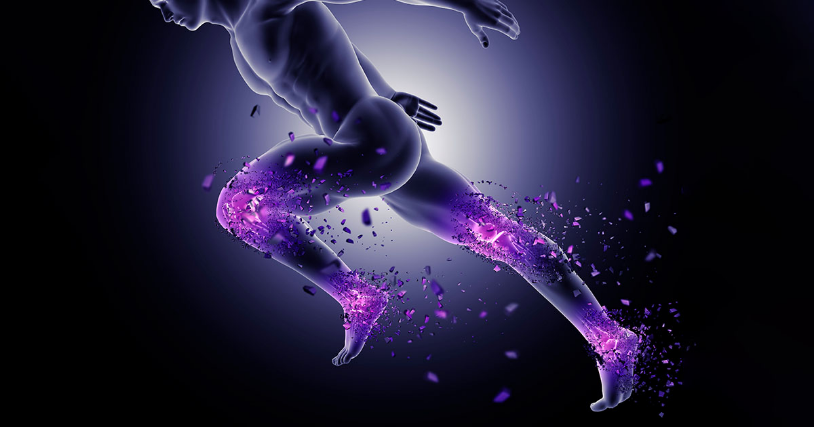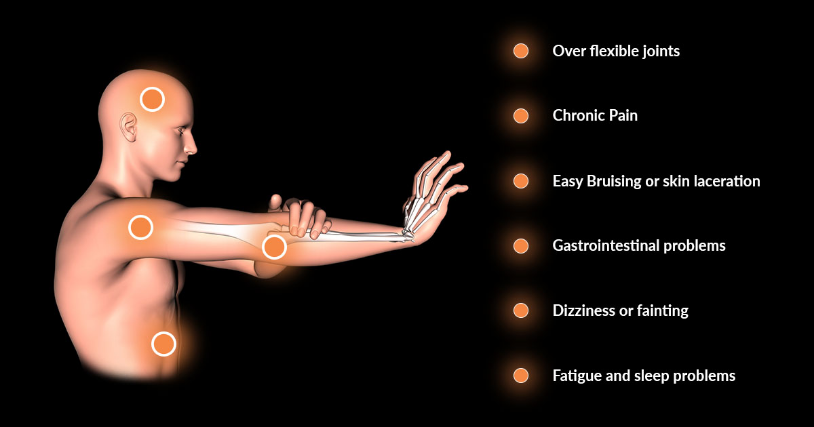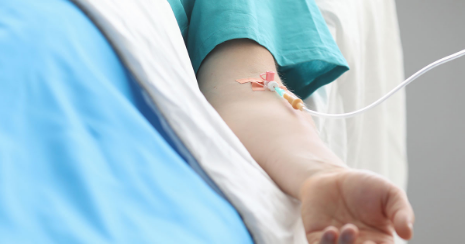There’s a popular saying in medicine: “When you hear hoofbeats, think of horses, not zebras.” In other words, when you have a symptom, it’s usually caused by the most common and predictable thing, not by a rare condition. The saying is meant to remind doctors to keep a level head when diagnosing patients.

The problem is when doctors “hear hoofbeats” they instinctively think of horses and begin covering all of the bases of common ailments and conditions. This can be a challenge because zebras are often misdiagnosed for a long time due to the clinical process and providers overlooking possible rare conditions. When doctors realize that the have in fact been presented with a zebra, they have to think outside the box to figure out what’s really wrong and really analyze the original symptoms and any new symptoms that may have come to light due to other treatments. But it’s important to remember that just because something is rare, doesn’t mean it’s not real.
Zebra Illness: Ehlers-Danlos Syndrome

Ehlers Danlos Syndrome is a rare condition that affects the connective tissues in the body. It can cause joint dislocations, chronic pain, and fragile skin that bruises easily. The symptoms of Ehlers Danlos Syndrome are often similar to other conditions, so it’s frequently missed altogether or misdiagnosed. A correct diagnosis is important because the condition can be managed with treatment and lifestyle changes. — EDS symptoms can vary from person to person and range from mild to severe. Some common symptoms include:
- Joint hypermobility – joints that move beyond the normal range
- Chronic pain – often in the muscles and joints
- Easy bruising or skin lacerations – due to fragile skin
- Gastrointestinal problems – such as GERD, constipation, diarrhea, or abdominal pain
- Dizziness or fainting – due to low blood pressure
- Fatigue – often severe
- Sleep problems
Some people with EDS also experience:
- Chronic headaches – often migraine headaches
- Chronic fatigue syndrome
- Fibromyalgia
- Temporomandibular joint dysfunction (TMJ)
- Depression or anxiety
The severity of symptoms can vary from person to person. Some people with EDS have only mild symptoms, while others may have more severe symptoms that can significantly impact their quality of life.
What is EDS?

EDS is a connective tissue disorder. It exists on a spectrum, which means that there is a wide range of possible symptoms and severity levels. Symptoms can also vary over time and may be worse during times of stress or illness. There is no cure for EDS, but there are treatments that can help alleviate some of the symptoms.
How is EDS diagnosed?

Since there is no one test for EDS, diagnosis can be tricky. The best way to confirm a diagnosis is to see a doctor who specializes in connective tissue disorders. They will take a detailed medical history and do a physical examination. They may also order tests, such as blood tests, genetic tests, or skin biopsies. Patients with EDS are often diagnosed with other co-occurring conditions, including Chronic Fatigue Syndrome (CFS), Fibromyalgia, Migraines, Irritable Bowel Syndrome (IBS), Endometriosis, Cervical-Cranio Instability, and other chronic conditions.
Atlanta Treatment for EDS Symptoms

If you have EDS, it is important to see a doctor who is familiar with the condition. There is no one-size-fits-all treatment for EDS, but treatments can help reduce symptoms and improve quality of life. Some treatments that may be recommended for EDS include:
- Physical therapy: Physical therapy can help improve flexibility and strength, and reduce pain.
- Occupational therapy: Occupational therapy can help with activities of daily living, such as dressing, bathing, and eating.
- Symptom management: Localized injections, cellular therapy, nutritional supplements, IV drip support, and other advanced integrative therapies may help to reduce symptoms and pain.
- Assistive devices: Assistive devices, such as splints and braces, can help support joints and reduce pain.
An Integrative Approach to EDS
Once you’ve been diagnosed with EDS, symptom management becomes important to avoid further damage to connective tissues. Advanced Regenerative Therapy offers an advanced healthcare approach to managing the symptoms of EDS and chronic illness.
Platelet Rich Plasma Injections (PRP) for hEDS

The connective tissues that hold your bones to each other are called ligaments, and like tendons, which hold muscles to your bones, they are made of collagen. In those with hEDS, this connective tissue is too elastic, leaving it weak and unable to keep the joints and spine in alignment. Researchers are beginning to explore how regenerative injection therapies like Platelet Rich Plasma and Stem Cell therapy can help EDS patients.
Based on recent studies, these treatments have demonstrated good empirical and clinical results in relieving painful joint instability and hypermobility in patients with hEDS.
One 2017 study looked at the effects of PRP injections in EDS patients with shoulder instability. The study found that, compared to those who didn’t receive the injection, patients who did had a significant decrease in pain levels and an increase in function. Regenerative medicine injections like PRP and cellular therapy can help restore balance and stability to the spine and joints by reducing inflammation and stimulating the body to repair damaged cartilage.
PRP treatments involve collecting a small amount of your blood and spinning it in a centrifuge to separate the platelets from the red cells. The collected platelet serum is then injected back into the injured area to promote organic healing and natural tissue regeneration. PRP therapy can help those with hEDS because the platelets in PRP contain concentrated growth factors that are necessary for the formation of new collagen. These advanced medical treatments also promote the formation of fibrocartilage, which is found in the discs of the spine and at attachments between ligaments and tendons to bones, and hyaline cartilage, which covers and cushions the ends of bones.
IV Vitamins

Intravenous fluids and IV nutritional support may provide symptom relief for some EDS patients. Dehydration and malnutrition are common in those with the condition due to gastrointestinal issues like bloating, abdominal pain, nausea, and diarrhea. A healthy diet is important for everyone, but it’s especially crucial for those with EDS.
Eating a nutritious diet can help reduce inflammation, support the immune system, and promote healing. IV vitamins can help replenish electrolytes, hydration levels, and nutrients that may be lost due to these GI issues. IV therapy can also help boost the immune system, which is often weakened in those with EDS.
Supplements for EDS

Several specific nutrients may be especially beneficial for EDS patients. These include essential amino acids, vitamins, and minerals. Omega-3 fatty acids are anti-inflammatory and can help reduce joint pain. They’re found in fatty fish like salmon, mackerel, and sardines, as well as in flaxseed, chia seeds, and walnuts.
Vitamin C is necessary for the production of collagen, and vitamin D helps the body absorb calcium, which is important for bone health. Magnesium is a mineral that’s involved in over 300 biochemical reactions in the body, including muscle and nerve function, energy production, and detoxification.
EDS patients may benefit from taking supplements of these nutrients if they’re not able to get enough from their diet. Talk to your healthcare provider today to learn more about which supplements you should take if you have EDS.
Have you been misdiagnosed or ignored because your doctor wasn’t looking for zebras?
Advanced Regenerative Therapy offers a different approach. Our healthcare providers listen closely and pay attention. We look for underlying causes of your symptoms using the best of conventional, holistic, and integrative medicine techniques.
At Advanced Regenerative Therapy, we understand that when it comes to your health, one size does not fit all. We offer comprehensive and compassionate care that is tailored to each patient. Our goal is to get to the root cause of your health concerns and help you on your journey to wellness.
We offer advanced integrative healthcare treatments. If you’ve been frustrated by traditional medical care, it’s time to try an alternative.
Find a healthcare provider who will really listen to you about your concerns, and who will work with you to find the best possible treatment plan for your individual needs. Contact our office today to make an appointment.


